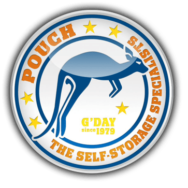-
How to Rotate Seasonal Decor Without Losing Closet Space

Closets bursting with Christmas trees in June and fall wreaths buried behind beach towels—these are familiar scenes for decor lovers. Rotating seasonal decorations keeps your home fresh and festive, but what do you do with everything during the off-season? With a little planning and a self-storage unit, you can celebrate every season without giving up precious closet space.
Continue reading “How to Rotate Seasonal Decor Without Losing Closet Space”
-
Maximizing Space in Small Living Areas: Top Tips and Tricks

Maximizing Space in Small Living Areas
Living in a small space doesn’t mean sacrificing comfort or style. The key is to use every square foot to the fullest with clever furniture and storage solutions. A tidy, well-organized home leads to a clearer mind, reduced stress, and more time enjoying what you love. Whether you live in a cozy studio apartment, a tiny dorm room, or a compact family home, you can find space for everything by making smart choices and getting a little creative. Here’s how to make your small living area feel bigger, more organized, and surprisingly luxurious.
Continue reading “Maximizing Space in Small Living Areas: Top Tips and Tricks”
-
Storing Holiday Decorations and Seasonal Gear Effectively
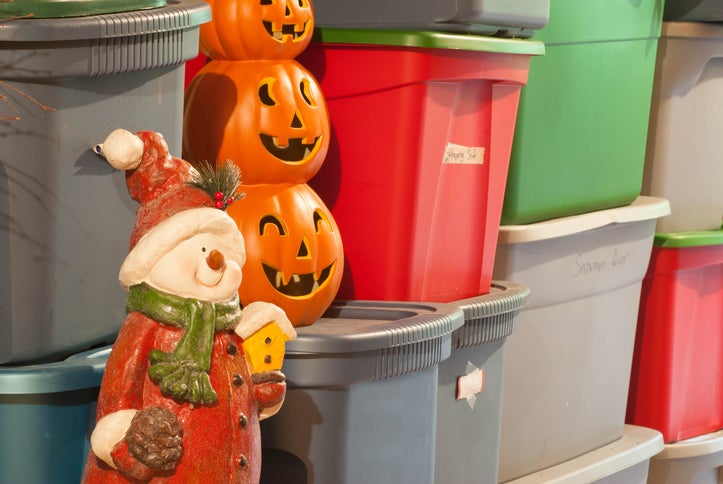
The holiday season is a time of joy and celebration, with families and friends coming together to create cherished memories. Holiday decorations play a significant role in setting the festive mood, whether it’s Christmas, Hanukkah, Halloween, or any other holiday. However, once the festivities are over, you want the décor stored safely and securely until the next holiday season. Let’s look at best practices for storing holiday decorations, helping you keep your cherished items in great condition and making your next decorating spree easier.
Declutter Before Storing
Before you even think about storing your holiday decorations, it’s essential to declutter. Decluttering can be an emotional but liberating process. Over the years, decorations can accumulate, and not all of them may still hold sentimental value. Assess each decoration’s value, both sentimental and practical. If you have decorations that you no longer use or love, consider passing them on to others who may appreciate them. By doing so, you not only reduce clutter but also bring joy to someone else’s holiday.
Use Proper Containers
Choosing the right containers is crucial for protecting your holiday decorations. Invest in sturdy, clear plastic containers that are specifically designed for storing ornaments, lights, and other decorations. These containers allow you to see the contents without opening them and provide protection from dust and moisture. Select containers with secure lids that seal tightly. This is especially important for ornaments, as a snugly sealed container helps prevent dust and humidity from reaching delicate items. Clear containers are ideal because they allow you to quickly identify the contents, saving you time when you’re searching for specific decorations.
Categorize and Label
A well-organized system is essential to simplify the process of decorating your home when the holiday season rolls around. When packing your holiday decorations, organize them by category. For instance, group all Christmas tree ornaments together, and separate lights from wreaths or figurines. Clearly label each container with its contents, making it easier to find what you need when the time comes to decorate again. Color-coding your containers or using a digital inventory system can make it easy to reference your goods and find what you’re looking for.
Protect Fragile Items
Fragile holiday decorations, such as glass ornaments or delicate figurines, require special attention. For glass ornaments, consider using specialized ornament storage boxes. These boxes come with individual compartments and dividers to keep each ornament securely in place. The added benefit is that these boxes are designed to protect ornaments from damage during transportation as well. For ornaments that don’t have boxes, or don’t fit into standard bulb boxes, use tissue paper or bubble wrap to prevent breakage. Place them gently in a container with soft padding on the bottom to further protect them.
Wrap Lights Neatly
Storing holiday lights correctly not only saves you time and frustration but also extends the life of the lights. Tangled holiday lights can be a major headache. To avoid this, invest in a quality spool or reel designed for storing lights. If you’re on a budget, make your own by cutting notches into a piece of cardboard. Wrap the lights around the cardboard, securing the plug end in a notch to prevent unraveling. Avoid wrapping them too tightly, as this can damage the wires and bulbs. Additionally, inspect the lights for any broken or missing bulbs before storing them. Replacing faulty bulbs immediately ensures your lights are ready to shine when the next holiday season arrives.
Store Artificial Trees Carefully
Artificial trees can take up a lot of space, but proper storage can keep them in great condition. Many artificial trees come with storage bags, so use these if available. If not, consider investing in a tree storage bag or wrap the tree in an old bedsheet or plastic wrap to protect it from dust and pests. When disassembling your tree, take care to fluff the branches and arrange them neatly. This will make it easier to set up the tree again when the time comes, and it will look just as beautiful as the first time you used it.
Keep Inflatables Dry
If you have holiday inflatables, it’s crucial to ensure they are completely dry before storing them. Any moisture left can lead to mold and damage. After cleaning, let them air out in the sun for a day before deflating and packing them away. Inspect them for any signs of wear and tear, such as punctures, and repair them before storing to prevent further damage.
Store Wrapping Paper Upright
Gift wrapping paper rolls are often unwieldy to store. Consider a wrapping paper storage container, which keeps your rolls upright and prevents them from getting wrinkled or torn. You can also use a simple garment bag to store wrapping paper rolls. Storing wrapping paper upright not only saves space but also keeps the paper in better condition. It prevents creases and damage to the paper, ensuring that your wrapping materials are ready for beautifully wrapped gifts in the coming holiday season.
Protect Fabrics and Textiles
Holiday linens, such as tablecloths, towels, and napkins add a warm and cozy ambiance to your home during the holidays. These should be cleaned before storing. Avoid folding them in the same creases each year, as this can weaken the fabric. Instead, roll them or use acid-free tissue paper to prevent permanent creases. Consider using fabric garment bags to protect these items, and store them in a cool, dry place away from direct sunlight.
Temperature and Humidity Control
Store your holiday decorations in a climate-controlled environment. Extreme temperatures, whether hot or cold, can damage items like candles, wax figurines, or delicate fabrics. Additionally, high humidity can lead to mold and mildew growth. A cool, dry storage area, like a basement or attic, can be suitable. Pouch has storage units as small as 5’x5’ that can be the perfect place for maintaining a stable environment, to ensure your decorations remain in pristine condition.
Use Pest Control Measures
Pest control is an often-overlooked aspect of holiday decoration storage. Rodents and insects can cause significant damage to your decorations if given the chance. Use pest repellents or traps in the spaces where you keep your holiday décor. Additionally, make sure containers are sealed tightly to create a barrier that helps safeguard your cherished holiday items. The last thing you want is to open your holiday containers after many months to find an infestation or pest damage to your decorations. Protect them accordingly so that you don’t discover a holiday mishap.
Inspect and Maintain
Before storing your holiday decorations, inspect them for any damage. Fix or replace items as needed, so they’re in excellent condition when you’re ready to use them again. This proactive approach can save you time and stress when the holiday season rolls around.
Create an Inventory List
Crafting and maintaining an inventory list of your holiday decorations can be incredibly helpful. Note what’s in each container and its condition. This way, you’ll have a clear idea of what you have, making it easier to plan your holiday decorating and reduce the likelihood of buying duplicates. You can also use this list to plan your decorating themes and decide which items to replace or add in the future.
Consider Custom Storage Solutions
If you have an extensive collection of holiday decorations, consider investing in self-storage with Pouch. We offer specialized storage options for holiday decorations, providing a tailored approach to your unique collection. With nine locations in Southern California, we can help you craft the perfect offsite holiday storage solution to keep your decorations climate controlled, secure, and out of the way. Whether it’s time to decorate or pack away, Pouch offers 24/7 access to your nearby self-storage unit.
Regularly Review and Update
It’s important to revisit your holiday decoration storage system regularly. As your collection grows or changes, your storage needs may evolve as well. This will help you stay organized and ensure that your cherished decorations remain in excellent condition.
Whether you need short-term or long-term storage, Pouch can help offer a convenient and secure solution for your storage needs. With have nine state-of-the-art storage facilities located throughout California, we’re proud to serve our community and several other surrounding areas with affordable and secure storage solutions. Find us in Anaheim, Rancho Cucamonga, Tustin, Lake Forest, San Juan Capistrano, Long Beach, Fountain Valley, Pasadena, and Santa Ana.
Contact your local facility if you would like to take a tour. We would love to show you around!
-
How Our Facilities Ensure the Safety of Your Belongings
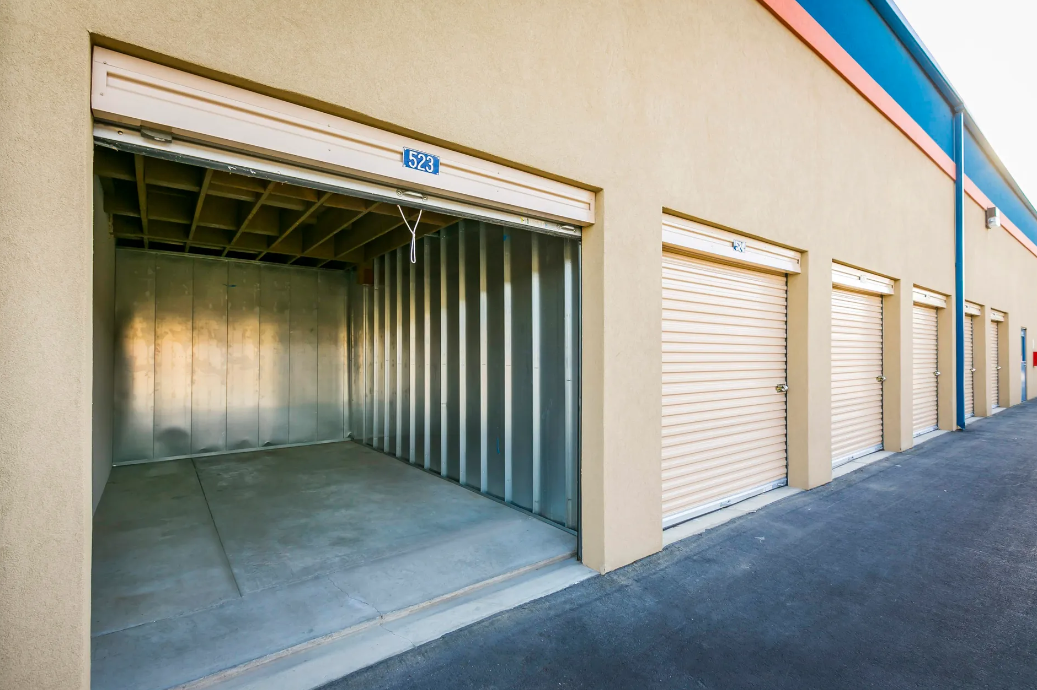
Pouch Self Storage is your partner in total security for safeguarding your valuable possessions. When you store with Pouch, you deserve the expectation that your belongings will be safe and protected in every way. That is why Pouch provides several protective measures to ensure the security of our facilities at all times.
Why is Self-Storage Security Important?
A storage facility’s service is only as good as the level of security and service that it can provide. Even if you have your own door lock for the storage unit that keeps your possessions, security of the overall facility is the first line of defense for keeping our tenants’ units safe.
Preventing Theft and Unauthorized Access: Self-storage facilities can be attractive targets for thieves due to the concentration of valuable items. Robust security measures, including surveillance cameras, access control systems, and on-site security personnel, deter potential criminals and prevent unauthorized access to storage units.
Preventing Vandalism and Property Damage: Beyond theft, security measures also protect the facility itself from vandalism, property damage, and other forms of destructive behavior. This helps maintain the integrity of the property and reduces repair costs.
Better for the Neighborhood: A secure self-storage facility contributes to the overall safety of the surrounding community. By deterring criminal activity and preventing theft, self-storage security plays a role in maintaining a safe environment for tenants, staff, and the surrounding neighborhood.
Your Peace of Mind: When you entrust your belongings to Pouch self-storage facilities, you expect them to be kept safe and secure. Our security measures are just one way that Pouch provides you with peace of mind, so you know your possessions are protected from theft, damage, or loss.
Reputation and Customer Satisfaction: Pouch is only as good as our reputation for security. We want your loyalty and word-of-mouth to your friends, family, and neighbors. By prioritizing security measures, we hope you will choose to store with Pouch. Our strong company history dates back to 1979, in large part because we have a commitment to protecting what’s most important to you.
All Pouch facilities are equipped with a number of security measures to provide you with peace of mind, so you can know that your self-storage space is protected from unwarranted entry. Let’s take a look at how our top-of-the line facilities across Southern California are the pinnacle of safety and security.
Fencing and Electronic Access Entry Gates
Security at all our facilities starts at the perimeter and entry points. Each of our nine storage facilities has perimeter fencing and electronically controlled keypad-activated entry gates.
Bright Ideas For Safety
Pouch prioritizes maintaining well-lit storage areas. From the entryways to the parking lot, to the interior corridors, we keep things bright so that you can feel safe and secure no matter what time of day or night you choose to pack in, load out, or just check on your storage unit.
Advanced Surveillance Cameras
One of the primary benefits of camera surveillance is its ability to deter criminal activity. The mere presence of visible cameras serves as a significant deterrent to potential thieves and vandals. Knowing that their actions are being monitored and recorded makes perpetrators less likely to target a self-storage facility.
In the event of a break-in or other security breach, surveillance footage can provide valuable evidence for investigations. Clear images of suspects and their activities can assist law enforcement in identifying and apprehending criminals. This not only helps bring perpetrators to justice but also aids in the recovery of stolen goods.
Remote Monitoring and Real-Time Response
Advanced surveillance systems allow for remote monitoring, enabling our managers to keep an eye on the property from any location. This real-time access to surveillance footage enables prompt response to any suspicious activity or security concerns.
Remote monitoring also facilitates proactive security measures. By observing patterns and identifying potential vulnerabilities, facility managers can make adjustments to security protocols and staff deployment to prevent incidents before they occur. Our high-tech setup provides the following benefits:
- Monitoring of Access Points: Cameras are strategically placed to monitor entry and exit points, ensuring that only authorized individuals access the facility.
- Monitoring of Common Areas: Surveillance of common areas, such as hallways and parking lots, help prevent vandalism, property damage, and other unwanted activities.
- Dispute Resolution: In case of tenant disputes or claims of property damage, surveillance footage can provide objective evidence to resolve issues fairly and efficiently.
Computer Monitoring Systems
All Pouch storage facilities have a state-of-the-art computer monitoring system. This system allows our self-storage managers to monitor the opening and closing of every storage unit door, 24 hours a day. Only the persons you authorize with your secret digital code are allowed access to your storage unit.
Safety Measures We All Share
Even with these robust security measures in place, it’s important to have a lock that you provide for your own storage unit. You wouldn’t leave your keys in your car unlocked. In the same way, preemptively securing your unit is important for safeguarding your belongings against theft. If you ever need to replace your lock, our self-service kiosks are available 24 hours a day. These provide a convenient place to purchase a new lock, or to make a payment or get a receipt.
RV, Boat & Vehicle Storage Security
Pouch offers a variety of specifically designed outdoor and covered RV, Boat & Vehicle parking spaces. Visit our Fountain Valley, Victoria, or Long Beach locations to learn more.
Why You Should Choose Pouch Self Storage
Pouch has been operating mini-storage facilities since 1979 and we’re committed to keeping our clients’ belongings safe. Founded by John Yelland, who hails from Australia, Pouch Self Storage is named in honor of the kangaroo’s pouch – nature’s safe and secure storage spot. We’re an industry leader in design, building, and maintenance of self-storage facilities, and we strive to give our occupants the most advanced security systems available. At our nine Southern California facilities, you’ll find the most secure self-storage options for your needs. Contact us today for more information.
-
Home Organization Hacks
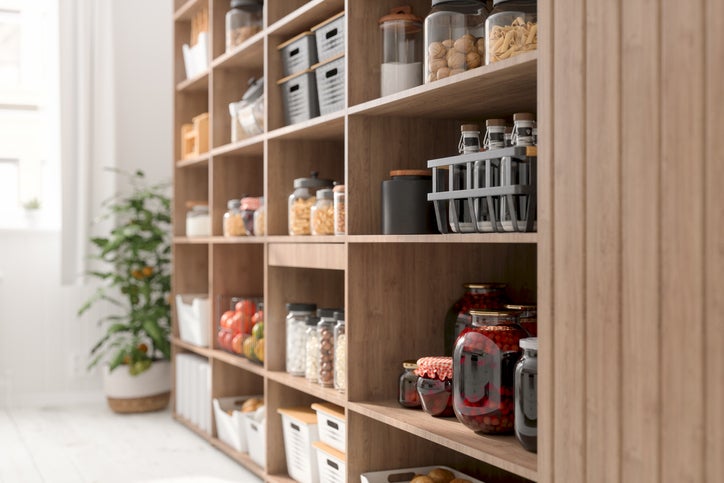
Transforming your home into a haven of organization and efficiency requires a blend of creativity, resourcefulness, and practical strategies. These innovative and creative solutions help you make the most of your available space, simplify daily routines, and add a touch of personalization to your home. Whether you’re tackling a small apartment, a family home, or an office space, we have some practical and aesthetic tips that will enhance your quality of life. You won’t need much more than a little bit of dedication and ingenuity. Check out these organizational hacks:
Repurpose and Upcycle: Giving New Life to Old Items
Before seeking out new storage solutions, look within your existing possessions for hidden potential. Repurposing and upcycling offer a sustainable and cost-effective approach to maximizing space and organization:
- Transform old shoeboxes into organizers for stationery, craft supplies, or small personal items, adding a touch of personalization to your storage solutions.
- Convert sturdy cardboard boxes into storage containers for seasonal items, pantry staples, or children’s toys, covering them with decorative paper or fabric for a stylish touch.
- Give a second life to glass jars by using them to store spices, dried goods, bathroom essentials, or even homemade candles, adding a rustic charm to your storage spaces.
Embrace Multifunctional Furniture
Integrate multifunctional furniture pieces that serve multiple purposes, maximizing your space and reducing clutter:
- Opt for ottomans with hidden storage compartments to stash away blankets, pillows, or extra linens, creating a dual-purpose seating and storage solution.
- Invest in a storage bed with built-in drawers or compartments to store extra bedding, seasonal clothes, or infrequently used items, maximizing space under the bed.
- Choose a coffee table with lift-top storage to keep magazines, remote controls, or board games organized and out of sight, while maintaining a stylish centerpiece for your living room.
Vertical Storage Solutions
Unlock the potential of vertical space by utilizing walls for storage, creating additional storage options without compromising floor space:
- Install wall-mounted shelves or floating shelves to display books, decorative items, or collectibles, freeing up floor space and adding visual interest to your walls.
- Hang pegboards or rails in kitchens, bathrooms, or workshops to organize utensils, tools, or cleaning supplies, keeping them within easy reach and adding a touch of industrial chic.
- Utilize over-the-door organizers for hanging towels, cleaning supplies, or accessories, maximizing unused door space for efficient storage and keeping essentials within easy reach.
Labeling and Categorization
- Label storage containers, boxes, or drawers with clear and concise labels, indicating their contents for quick identification and retrieval.
- Categorize items by type, purpose, or frequency of use, grouping similar items together for efficient organization and creating a logical flow within your storage spaces.
- Utilize color-coding systems to visually differentiate between categories, making it easier to locate items at a glance and adding a splash of color to your storage areas.
Utilizing Underutilized Spaces: Hidden Storage Gems
Uncover hidden storage opportunities in often overlooked areas, maximizing every inch of available space:
- Convert the space under beds into storage for out-of-season clothes, extra linens, or infrequently used items, utilizing rolling bins or drawer units for easy access.
- Utilize the area above cabinets or shelves for storing seasonal decorations, infrequently used appliances, or extra supplies, maximizing vertical space and keeping rarely used items out of the way.
- Install corner shelves or cabinets to maximize corner spaces, providing additional storage for small items, decorative accents, or frequently used items.
Regular Decluttering and Maintenance: A Habit for Sustainable Organization
Maintaining a clutter-free and organized home requires regular decluttering and maintenance:
- Schedule regular decluttering sessions to eliminate unused, broken, or unwanted items, reducing clutter and freeing up valuable storage space.
- Adopt a “one in, one out” rule to prevent the accumulation of unnecessary items, ensuring that every new addition has a designated place and doesn’t contribute to clutter.
- Regularly review and reorganize storage spaces to ensure that items remain categorized, labeled, and easily accessible, adapting your storage system as your needs and belongings evolve.
Customized Storage Solutions: Tailored to Your Needs
Design customized storage solutions that cater to your specific needs and preferences, maximizing functionality and personalization:
- Create DIY storage solutions using repurposed materials or customized designs to fit unique spaces or accommodate specific items.
- Invest in modular storage systems that can be adapted and reconfigured as your storage needs change, providing flexibility and adaptability over time.
- Consider incorporating built-in storage solutions during renovations or new constructions, maximizing space efficiency and creating a seamless integration with your home’s design.
- Consider an offsite self-storage unit at Pouch to help you get the edge on home organization. We have units ranging from 5’x5’ to 10‘x30’ to store any size collection.
Embracing Technology: Smart Storage Solutions
Leverage technology to enhance your storage solutions and streamline organization:
- Using digital labeling systems, such as QR codes or barcodes, can help you quickly identify and track items, especially in large or complex storage spaces.
- Employ smart storage devices, such as connected cabinets or drawers, to monitor inventory levels, track usage patterns, and receive alerts when items need replenishing.
- Consider incorporating smart home technology to control lighting, ventilation, or humidity levels in storage areas, ensuring optimal conditions for preserving delicate items or preventing damage.
Aesthetics and Harmony: Creating a Pleasing Environment
Storage solutions don’t have to be merely functional. They can also be aesthetic, contributing to a harmonious and inviting living environment:
- Choose storage containers, organizers, and furniture that complement your home’s décor and style, creating a cohesive and visually appealing space.
- Incorporate decorative elements, such as baskets, boxes, or trays, to add visual interest and personality to your storage areas.
- Color coordination and consistent design elements can create a sense of flow and visual harmony throughout your storage spaces.
Remember, home storage hacks are not merely about maximizing space; they are also about creating a functional, harmonious, and personalized living space that reflects your unique style and preferences. Embrace creativity, resourcefulness, and a touch of personal flair to transform your home into a haven of organization, efficiency, and tranquility. Most importantly, choose to set aside a little bit of time each day to incorporate routine de-cluttering and organization. By taking small steps and staying dedicated to a schedule, you will be able to attain and maintain an organized home life.
-
Eco-Friendly Storage Solutions
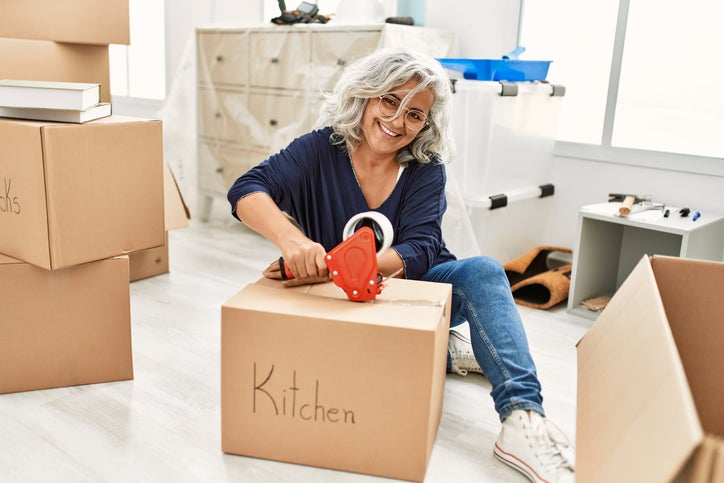
With an increase in global awareness of conservation and environmental issues, many people are beginning to change the way they approach everyday life. The mantra “Think globally, act locally” has caused people in all walks of life to consider how personal choices about their homes, communities, and cities can start to have a broader impact on the health of the entire planet. Simple acts of conservation might include walking or biking somewhere rather than driving a car, recycling household waste, or being aware to use faucets and lights sparingly and only when necessary.
Environmental conservation can also apply to how we store our extra goods and equipment, the things that we don’t necessarily need to use every day. Extraneous belongings like these can often best be suited to a closet, attic, or self-storage unit, and how you store your belongings can be just as impactful as where they are stored. Being aware of the different types of storage solutions available can help you find an eco-friendly way to protect and store your extraneous belongings. Common household and self-storage solutions often involve cardboard boxes or plastic tubs but each of these options has downsides for the environment.
What’s Wrong with Cardboard and Plastic?
Whereas storing items inside cardboard and plastic may be a cost-effective option, they each pose environmental concerns. Both materials are commonly used in home storage as well as self-storage but may not be the best choices if you’re also thinking globally.
Plastics
Plastic pollution is a multi-faceted environmental issue with far-reaching consequences.
- Plastic is non-biodegradable and can persist in the environment for hundreds or even thousands of years. This longevity contributes to the accumulation of plastic waste in landfills, oceans, and natural habitats.
- As plastic breaks down, it forms tiny particles called microplastics, which can be ingested by marine life, birds, and even humans. Microplastics can accumulate in the food chain, causing potential health problems.
- Plastic pollution poses a severe threat to wildlife, particularly marine animals. Ingestion of plastic debris can lead to starvation, internal injuries, and death. Entanglement in plastic waste can also cause suffocation, injuries, and restricted movement.
- Plastic production relies on fossil fuels, contributing to resource depletion and greenhouse gas emissions. The extraction and processing of these resources can also cause environmental damage.
- The vast amount of plastic waste generated poses significant challenges for waste management systems. Landfills are filling up, and recycling infrastructure is often inadequate to handle the volume of plastic waste.
Cardboard:
While cardboard is often considered a more environmentally friendly material compared to plastics, it can still have negative environmental impacts if not managed properly. Here are some of the primary ways cardboard can harm the environment:
- Save The Trees: The production of cardboard requires wood pulp, which can contribute to deforestation if not sourced from sustainably managed forests. Deforestation leads to habitat loss, biodiversity decline, and soil erosion.
- Greenhouse Impacts: When cardboard ends up in landfills, it decomposes anaerobically, releasing methane, a potent greenhouse gas that contributes to climate change. Methane is 25 times more potent than carbon dioxide in trapping heat in the atmosphere.
- Production Concerns: The manufacturing process of cardboard involves energy consumption, water usage, and the use of chemicals, which can have environmental impacts.
- Landfill Overload: Although cardboard is recyclable, recycling infrastructure and participation rates vary across regions. Improper disposal of cardboard can lead to landfill accumulation and litter.
Eco-Friendly Storage Alternatives
There are many alternatives to plastic and cardboard that can not only be better for the environment can provide other benefits as well, whether greater security for your items or an added aesthetic touch for your home. Here are some examples:
Rattan Boxes: A rattan box is a versatile storage container made from natural rattan fibers, a type of climbing palm native to Southeast Asia. Rattan is known for being flexible, durable, and lightweight. Rattan boxes are ideal for storing household items, such as blankets, towels, toys, books, or seasonal decorations.
Used Furniture: Upcycling an old bureau or dresser is a great way to conserve while also providing additional storage. A chest of drawers can go in a garage or a storage unit, providing ideal space for clothing, housewares, holiday gear or seasonal apparel.
Glass Jars: Glass jars offer a versatile and sustainable storage solution for a wide variety of items, providing an airtight, durable, and visually pleasing way to organize and preserve a range of household goods. Use them to hold bathroom essentials, dry goods, and craft supplies.
Wooden Crates: Wooden crates offer a sturdy, rustic, and versatile storage solution for a variety of items, providing a charming and durable way to organize and display household goods. They are best for storing blankets and linens, children’s toys, books and magazines, shoes, and seasonal decorations.
Canvas Bins: Canvas containers provide a breathable, lightweight, and aesthetically pleasing way to organize and store household goods. They’re perfect for clothing and accessories, toys, craft supplies, or outdoor gear and supplies.
Wicker Baskets: Wicker baskets offer a provide a natural and sustainable storage solution for a variety of items. Perks include breathability, durability and style for organizing items like clothes, toys, extra pillows, or blankets.
More Earth-Friendly Tips
Conservation doesn’t only have to do with what you use to store your stuff. Here are some simple steps you can take to contribute to an overall more mindful way of life.
- Dare to Declutter: By simply avoiding the urge to get more stuff, you are already making an eco-friendly decision. Careful consideration of your person and household needs can help you curate a minimalist yet effective set of tools, goods, and housewares. A bespoke approach will make sure that you refrain from contributing the landfill buildup while also providing you with a more peaceful and healthy home life.
- Digitize Your Docs: You can help reduce deforestation while also reclaiming extra space around the house and office by implementing a digital approach to documents. Rather than using the printer and file folders for your documents, archiving them digitally can help make sure your files are secure, accessible, and not adding to your storage clutter.
- Repurpose Extra Items: Making storage use out of things you already own can be a great way to eliminate clutter while also being environmentally friendly. For example, shoe boxes can be used to hold office supplies. Old jars can be cleaned and used to store small hardware like screws and bolts. Let your imagination help you find unique upcycling opportunities in your own home.
- Sustainable Kitchen Storage: Reusable silicone food bags can be a great alternative to single-use Ziplock style food bags. Airtight glass containers and reusable beeswax wraps can also help you reduce single-use plastics.
Embracing eco-friendly storage solutions is not just a matter of environmental responsibility but also a testament to our commitment to a sustainable future. By incorporating sustainable practices into our storage choices, we can collectively reduce waste, conserve resources, and foster a harmonious relationship with our planet. Pouch can help you with offsite self-storage needs. Get in touch with us today to learn about how we can assist you.
-
What You Need to Know About Storing Toiletries
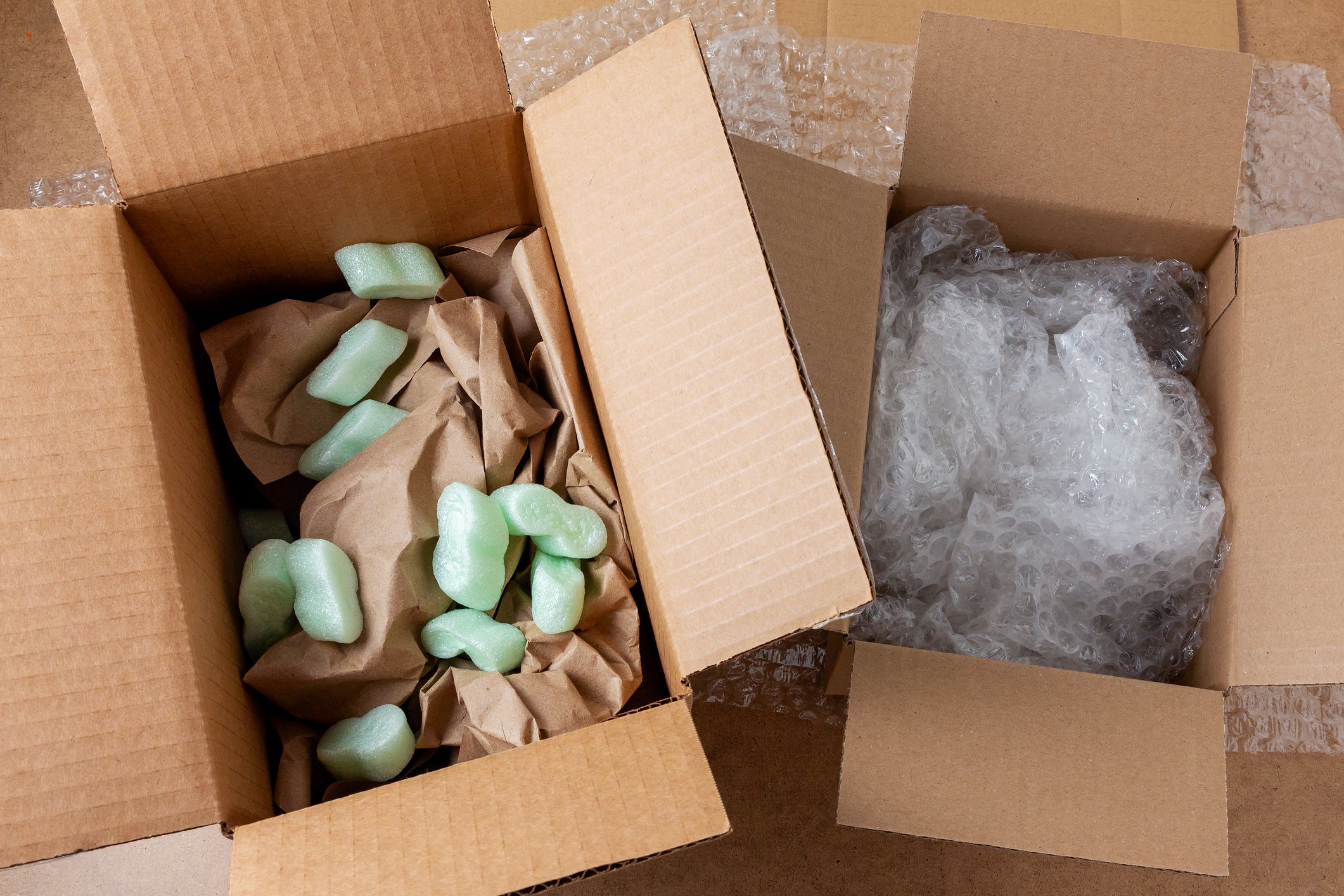
Storing toiletries can be a tough task, especially when you have limited space. It’s important to know what types of toiletries you have and how to store them properly to keep them safe and easily accessible. As a customer of Pouch Self Storage, you want to ensure that your toiletries are in good condition and accessible whenever you need them. In this blog post, we will discuss some of the best ways to store your toiletries for maximum space utilization and easy access.
Create a Toiletries Inventory List
The first step in storing toiletries is to create a list of all the items you have. This will help you get rid of anything that is expired or unused and make storage more manageable. By creating an inventory list, you can also determine which type of storage units you will need. If you have a lot of bulky items, you’ll likely need a larger unit. If you only have a few small items, a smaller unit may suffice.
Use Suction Cups and Shelf Dividers
Suction cups and shelf dividers are excellent organizers for bathroom toiletries. Suction cups are easy to install, don’t require drilling holes, and are great for holding small toiletries like toothbrushes, razors, and makeup brushes. On the other hand, shelf dividers are perfect for storing larger items like shampoos and conditioners. They help you keep your bathroom necessities within reach and upright, thereby reducing the chances of spilling.
Store Toiletries in Clear Containers
The advantage of clear containers is that they help you see what’s inside, look nice, and fit well with any decor style. You can use glass, acrylic, or plastic clear containers, but be sure that they’re airtight or have a secure lid that will prevent moisture from damaging your toiletries. Clear containers also make it easier to spot expiry dates and replace your products accordingly.
Label Everything
When you have multiple storage containers, labeling them is essential for easy access. You don’t want to waste time looking through every container to find what you need. Put labels on your storage bins, shelves, and baskets with specific items. For example, you could label a container ‘Hair Products’ with hair spray, gel, and serum, or ‘First Aid’ for band-aids and medicine.
Use the Back of the Door
If you’re short on space in your bathroom, using the back of the door can be a lifesaver. You can install an over-the-door storage rack for towels, washcloths, and robes. Door-mounted organizers are also great for keeping your toiletries within reach when you’re showering, shaving, or applying makeup. You can also install hooks or a rod to hang bathrobes or towels.
Visit Pouch Self Storage Today for All Your Storage Needs!
Storing toiletries is all about organization and getting creative with the space you have. If you’re dealing with clutter in your California home or business, we’re here to lend a hand. Our storage facilities are state-of-the-art and gated, perfect for all storage needs. No matter the size or duration, Pouch Self Storage has you covered. Please don’t hesitate to reach out if you need assistance or have any questions.
-
How to Choose the Right Storage Boxes for You
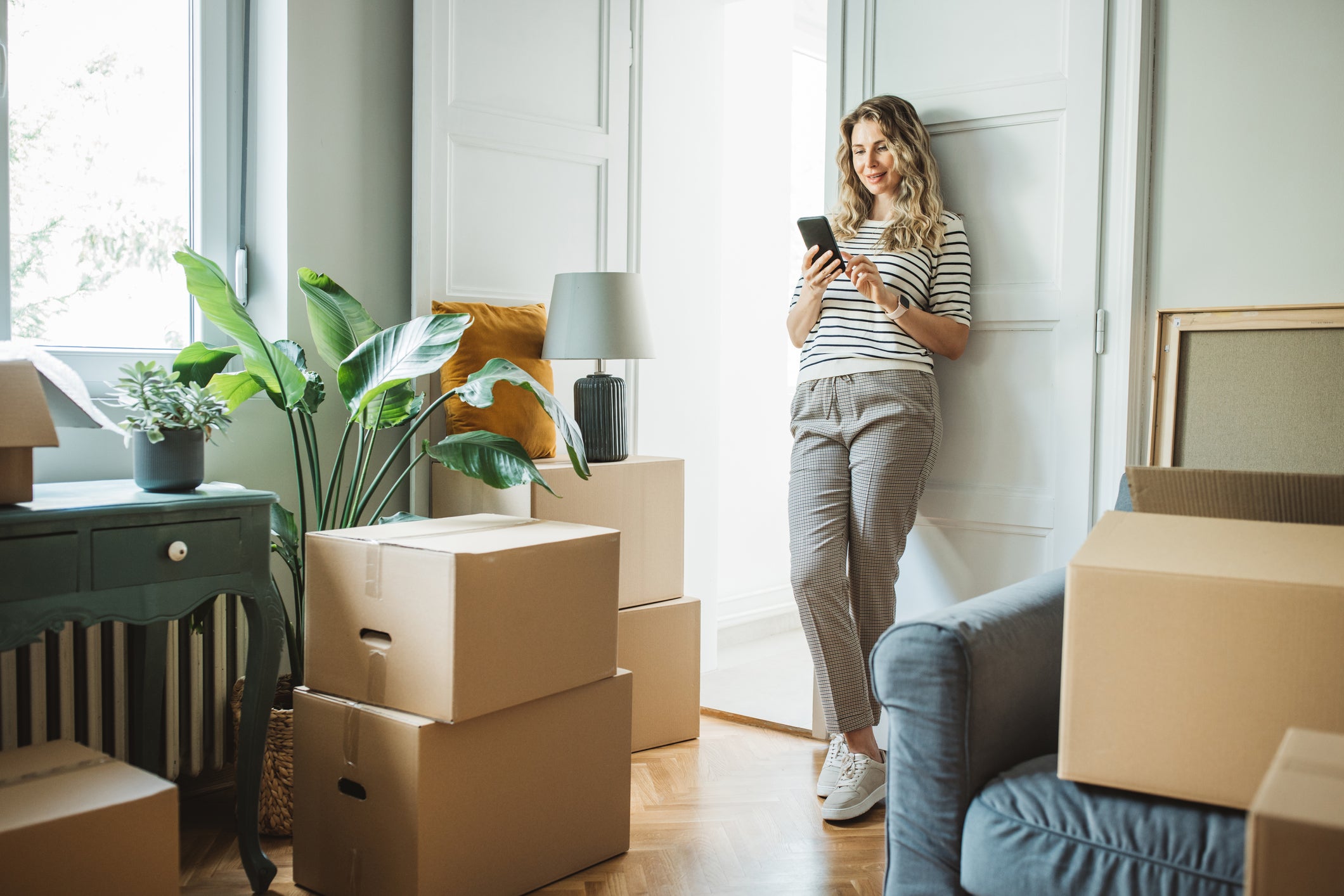
When you’re packing your things in storage, you’ll want to pack them carefully. This means choosing the right storage unit and using the right packing materials, but what about the boxes? Does the type of box really matter? It does, and the type of box you choose will depend largely on what you intend to store in it. Let’s take a look at different types of storage boxes and how they are best used.
- Cardboard is useful but not the best option for long-term storage. Cardboard boxes are often the go-to for packing, and certainly for moving, and with good reason. They’re lightweight, inexpensive, easy to label, stackable, and they can be easily reused or recycled. However, if you’re going to be storing your items for an extended period of time, cardboard may not be your best option. Cardboard boxes are easily damaged, attract vermin, and will quickly allow mold and mildew growth if they get wet. If you are storing items for several months and your unit is not climate controlled, steer clear of carboard boxes.
- Plastic boxes are perfect for storage. Easily stackable, impervious to water, and nearly indestructible, plastic bins are the perfect option for storing things safely. They don’t require packing tape, because they are self-sealing, and they’ll last a long time. However, they are much more expensive than cardboard, so if you are only storing things for a short time, they may not be worth the expense.
- Some items require specialty boxes. If you are storing something like dishes, art, or electronics, it’s worth finding specialty boxes designed to hold these items. Typically, these boxes will have inserts that keep things from shifting in transit and make them easier to pack. While they can be more expensive than traditional boxes, they give you the peace of mind that comes from knowing your items are safe and secure.
- It’s important to choose the right sized boxes. Small boxes are good for small, heavy things like books, because you don’t want a large box to contain too much weight. You can also pack fragile things like dishes in small boxes, to help keep them protected. Medium boxes are good for larger items that don’t need to be tightly packed, like clothing, toys, or cookware. Large boxes can be filled with lightweight things like linens and blankets, and extra large boxes can hold things that don’t fit in smaller boxes, like comforters, coats, and larger kitchen appliances. Try to keep small boxes under 50 pounds, medium and large under 65, and extra large under 70 pounds, so that they will not be too cumbersome to move. Wardrobe boxes are handy for storing hanging items, and you can use the bottom for things like shoes and purses.
No matter what type of boxes you choose, there are a few good practices to remember. First, choose high-quality boxes so that they will be less likely to allow your items to be damaged. Label everything clearly so that you know exactly what’s inside, and stack your boxes with the heavier things on the bottom. When you pack a box, be sure to fill in gaps between items with packing materials, and when you stack your boxes, do the same thing. This way, the items inside the boxes are less likely to shift and sustain damage, and the boxes themselves are also less likely to shift.
Choosing the right boxes is important, and so is choosing the right storage facility. When you’re seeking a place to store your things in Southern California, you owe it to yourself to check out Pouch Self Storage. We’ve been operating mini-storage facilities since 1979 and we’re committed to keeping our clients’ belongings safe. Founded by John Yelland, who hails from Australia, Pouch Self Storage is named in honor of the kangaroo’s pouch- nature’s safe and secure storage spot. We’re an industry leader in design, building, and maintenance of self-storage facilities, and we strive to give our occupants the most advanced security systems available. At our nine Southern California facilities, you’ll find state-of-the-art computer monitoring systems that allow our self-storage managers to monitor the opening and closing of every storage unit door, 24 hours a day. For more information, call (800) 378-4598 or contact us through our website.
-
How To Organize a Storage Unit
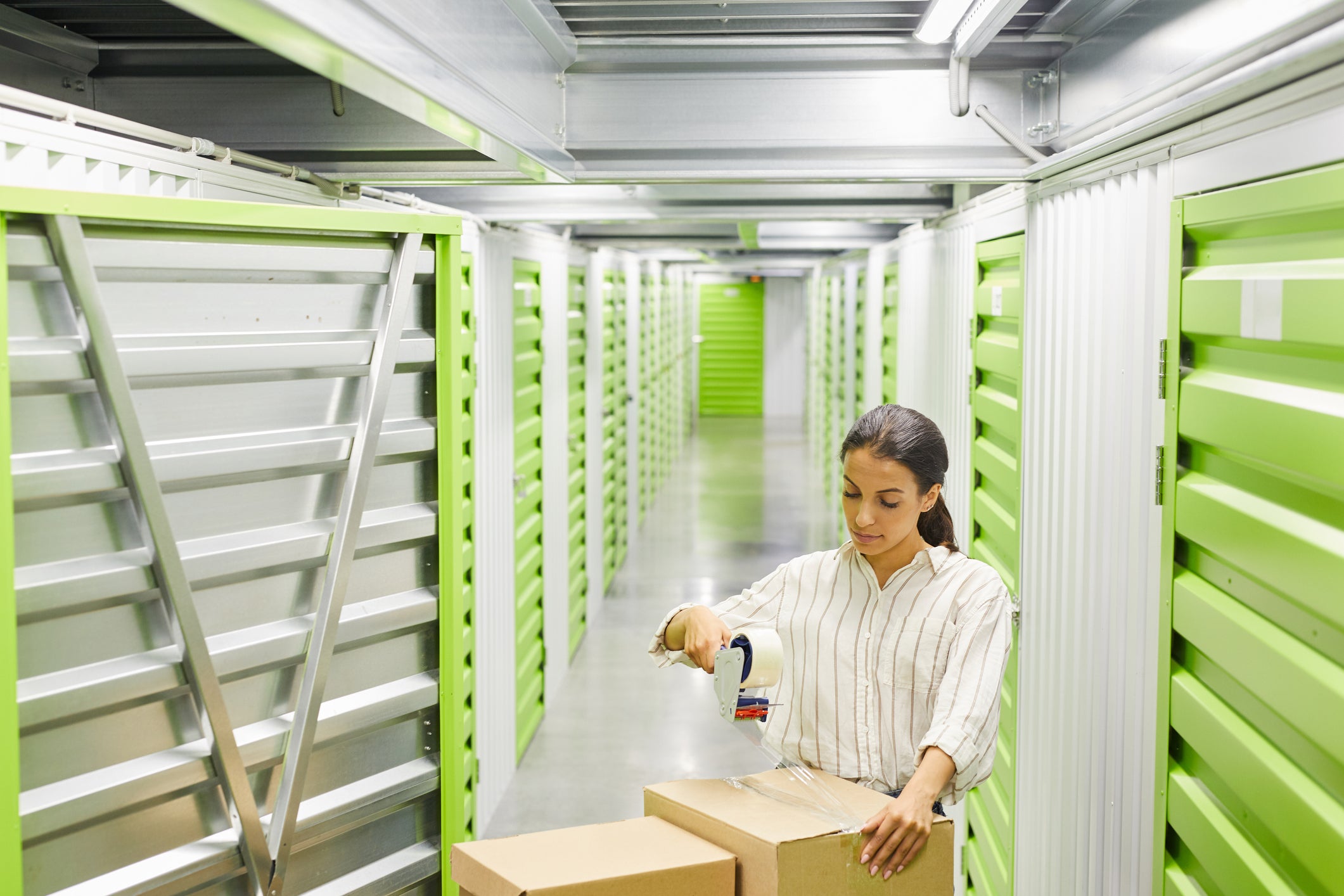
When you’re renting a storage unit, you will want to make the most of your allotted space. In addition to maximizing your square footage, however, it’s crucial to keep your belongings not only well protected but also accessible. When you need to retrieve something, you don’t want to have to turn your storage unit upside down looking for it or, even worse, dig through boxes. Here, we offer some organizing tips for storing your things efficiently.
- Choose the right sized space. How much space do you need for the belongings you intend to store? It’s extremely frustrating to begin packing a storage unit and realize it’s the wrong size, so make sure you do your homework before you rent a unit. Make a list of the items you wish to store and estimate how much space they’ll occupy. You can find storage calculators online to help you with this process. In general, units come in 10 by 10, which is about half the size of a one-car garage, 10 by 20, which will hold the contents of a three bedroom apartment, and 10 by 15, which falls in the middle. Some storage facilities also offer 5 by 5, 5 by 10, and 5 by 15 feet units and, on the other end of the spectrum, 10 by 25 and 10 by 30 units, large enough for a houseful of items. If you’re in doubt about the size you’ll need, it’s usually safer to go one size higher. When you’re choosing a storage unit, consider other factors, too, like whether you need a space that’s climate controlled.
- Keep a detailed inventory. While you may be able to easily recall which large pieces of furniture you have in storage, you might just as easily forget some of the smaller items. Having an accurate inventory helps you to be able to locate things when you need them, without digging through your boxes. It can also be helpful to have a map of your unit, detailing where items are located.
- Pack your items carefully. Consider clear storage bins rather than cardboard boxes. These do a better job of protecting your belongings, and they also make it easier to see what’s in the box. Know how to pack each item properly. Store electronics by removing all cords and cables and enclosing them in separate waterproof bags, then covering your equipment to keep out dust and dirt. Store clothes by folding or rolling and placing them loosely into your boxes, with silica packets to keep them dry. You can also hang clothes in garment bags on a rolling cart or in a wardrobe box. Appliances should have the hoses and tanks removed and drained before storage, should be dry before storing, and should be sprayed for pests. If you’re storing a refrigerator, leave the door ajar, and if you’re storing your grill, deep clean it and remove the propane tank before storing. Store delicate items by wrapping them in paper or bubble wrap and packing them in a study box, and store books by wrapping them in acid-free archival paper and packing them flat, not with the spine or binding pointing up.
- Label everything. Be specific. If you’re looking for a cookbook, you’ll find it much more easily if you have a box labelled “cookbooks” instead of six boxes labelled simply “books.” Label the boxes on more than one side, in case one side is obscured once everything is in storage.
- Leave space to walk. Leaving at least one pathway through your storage unit will allow you to access the things you need more efficiently, without having to drag things out or climb over things.
- Store things in a logical arrangement. Disassemble furniture and store these pieces upright, to maximize your space. Store large, heavy items on the bottom, going lighter as you go up, and make as much use of vertical space as you can. It can be helpful to use shelves if you have a number of small items to store, and it’s wise to leave a step ladder in the unit to help you reach things. Store things you’ll need to use more frequently towards the front of the unit, so you can access them more easily.
Pouch Self Storage. We’ve been operating mini-storage facilities since 1979 and we’re committed to keeping our clients’ belongings safe. Founded by John Yelland, who hails from Australia, Pouch Self Storage is named in honor of the kangaroo’s pouch- nature’s safe and secure storage spot. We’re an industry leader in design, building, and maintenance of self-storage facilities, and we strive to give our occupants the most advanced security systems available. At our nine Southern California facilities, you’ll find state-of-the-art computer monitoring systems that allow our self-storage managers to monitor the opening and closing of every storage unit door, 24 hours a day. For more information, call (800) 378-4598 or contact us through our website.
-
Storage Guide for a College Student
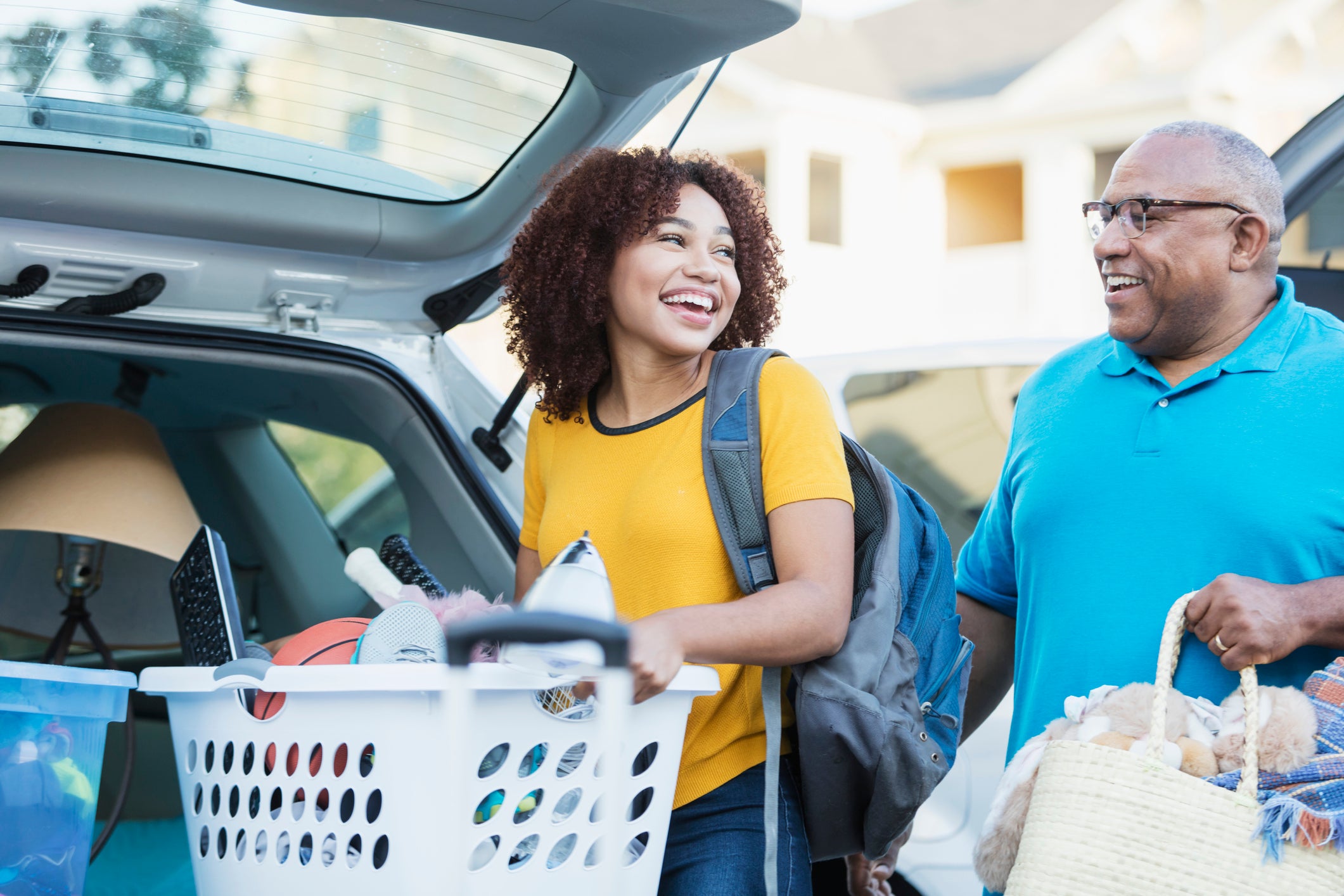
If you’re in college, it’s likely that you’ve hauled quite a bit of stuff from home into your new dorm or apartment. When the school year is over and it’s time to head out for the summer, you probably won’t want to have to take all of those things with you. What’s the solution? Get a storage unit for the summer! Using self-storage is the perfect way to minimize what you have to take back and forth, while making sure you have what you need when school starts back up in the fall.
What kind of storage unit will you need? Storage units can typically hold at least one room full of furniture. For students living in two or three-bedroom apartments, a larger unit may be a better option. Which size unit will you need? A 5’ by 5’ storage space is perfect for holding a loveseat, boxes, and home décor, while a 5’ by 10’ unit will hold a sofa or twin bed, along with some smaller furnishings and décor. You should also consider a climate-controlled storage unit, especially if you’re storing clothing, papers, or furniture. This will protect your furniture from the elements, as well as mold and mildew.
No matter what you are storing while you’re away, make sure it’s packed correctly.
- Furniture: Disassemble what you can, and pack small things in larger things when you can’t. For instance, take apart a bed frame, but store small objects in your dresser drawers. When storing a mattress, wrap it in two fitted sheets or store it in a plastic mattress bag to protect it.
- Kitchen items: If you have pots and pans, glass or plastic storage containers, dishes, glasses, and silverware, there’s no need for you to bring those things back home with you. Instead, store your kitchen for the summer. Put fragile items in boxes lined with bubble wrap or packing paper, wrapping breakables carefully and storing heavier items on the bottom. Put extra filling material in the tops of the boxes, so that you can stack them without the risk of breaking any of their contents.
- Bedding: You probably have bedding that was purchased specifically for your room at college, especially if you live in the dorm. There’s no need to carry those things home and try to find a place for them in your parents’ house over the summer. Instead, pack your comforters, sheets, blankets, and extra pillows in large boxes and store them while you’re away. Don’t pack anything made of cloth in plastic bags, because moisture can become trapped in the bags and cause mildew.
- Books and school supplies: These supplies can be bulky, so they’re best left behind when you leave campus. Consider selling any books you won’t need in the future, but keep everything you will need next year in a self-storage unit. Use small, sturdy boxes to pack books, and place them in the box horizontally, never vertically, because storing them vertically can damage their spines.
- Seasonal clothing: Heavy winter coats, gloves, and hats will be of no use to you over your summer vacation. Instead of weighing yourself down with unnecessary clothing, wash or dry clean it carefully and pack it up until you need it again. Clear, plastic boxes are great for preventing damage to your clothing while it’s stored, or you can use wardrobe boxes, designed specifically for hanging clothes.
- Sports equipment: If you play a winter sport and will need your gear at school, you can leave it when you go home for the summer. Sporting goods can be expensive, so pack everything carefully, making sure not to damage breakable items and securing everything in appropriate containers. As with all the other things you store, take care to clean your sports equipment before you pack it away for the summer.
Especially if your hometown is far from where you go to school, leaving things in self-storage can help lighten your load and make moving off and back onto campus go more smoothly. When you’re ready to find a great self-storage facility, choose Pouch Self Storage. We’ve been operating mini-storage facilities since 1979 and we’re committed to keeping our clients’ belongings safe. Founded by John Yelland, who hails from Australia, Pouch Self Storage is named in honor of the kangaroo’s pouch- nature’s safe and secure storage spot. We’re an industry leader in design, building, and maintenance of self-storage facilities, and we strive to give our occupants the most advanced security systems available. At our nine Southern California facilities, you’ll find state-of-the-art computer monitoring systems that allow our self-storage managers to monitor the opening and closing of every storage unit door, 24 hours a day. For more information, call (800) 378-4598 or contact us through our website.
